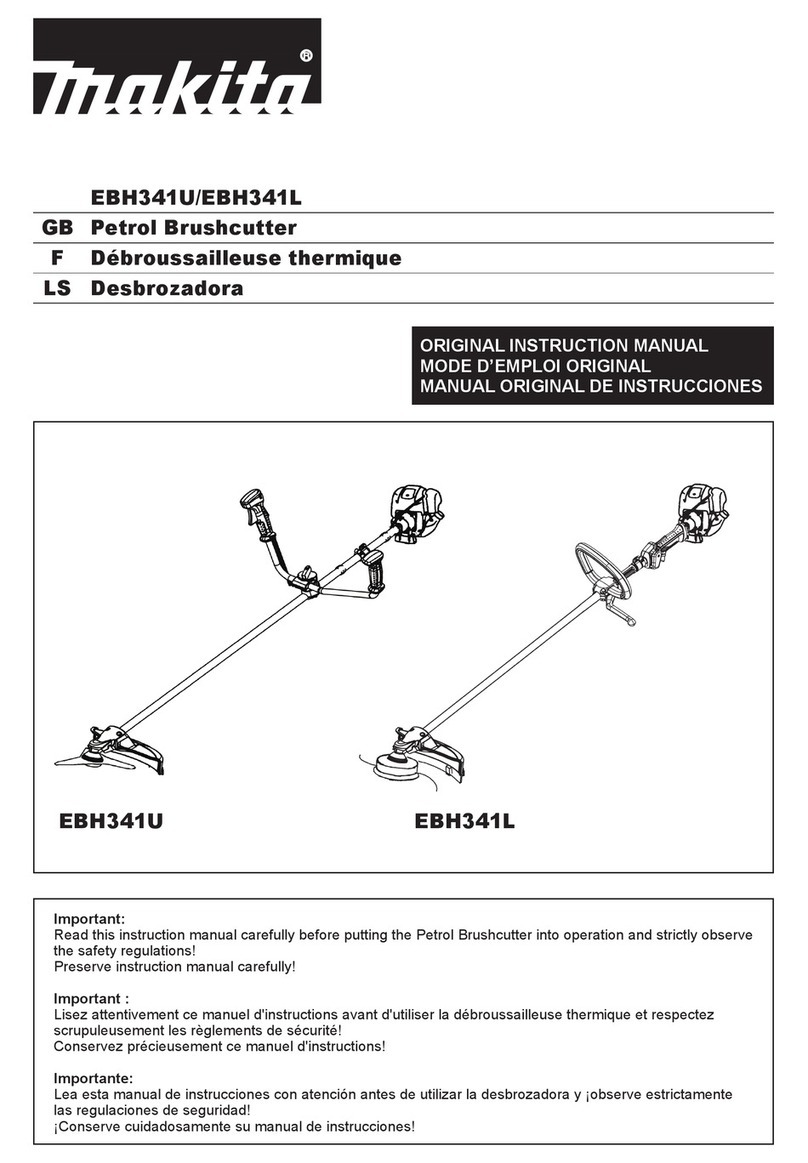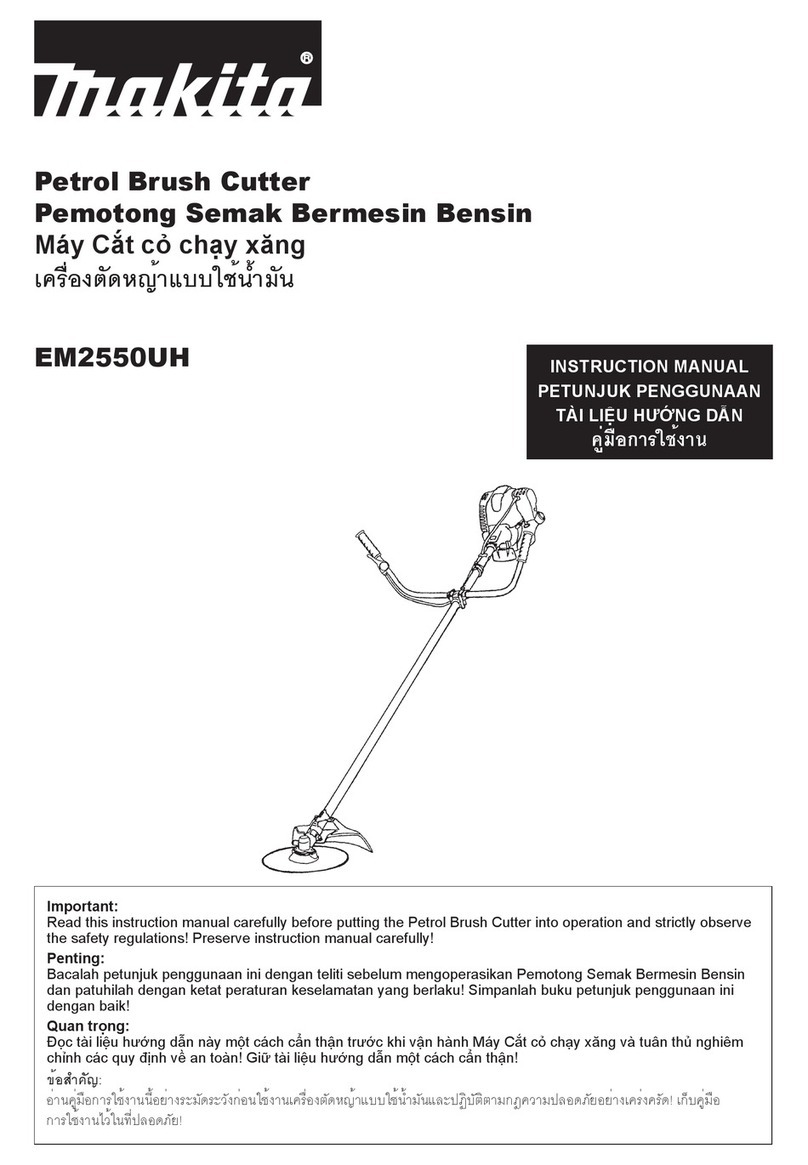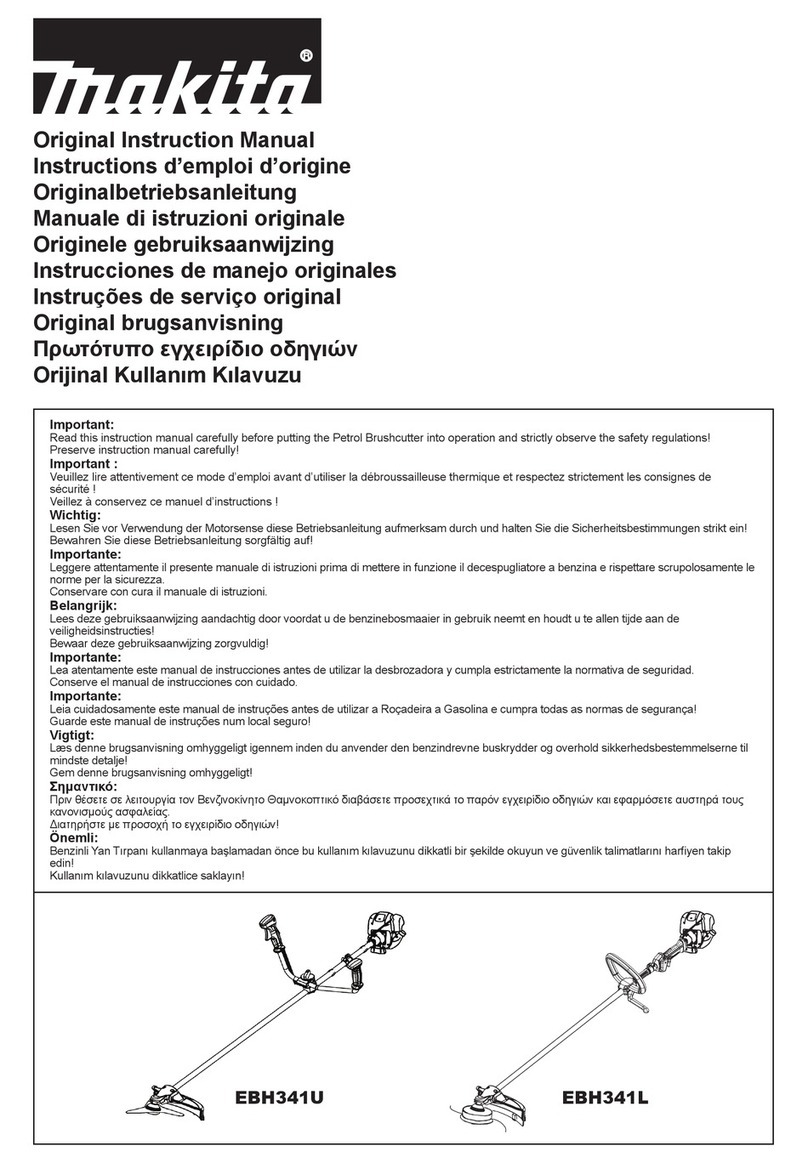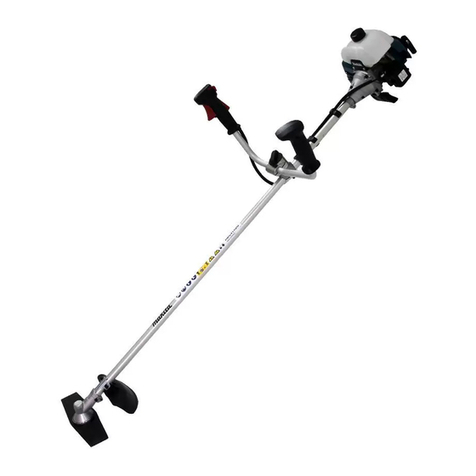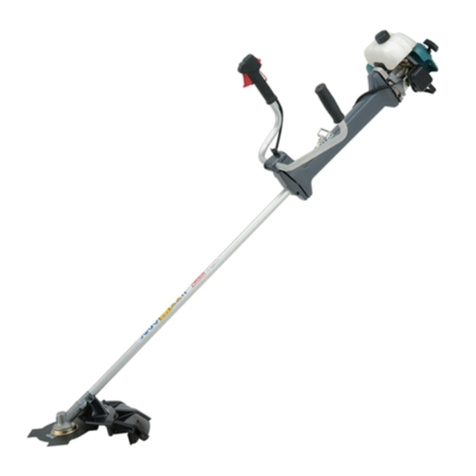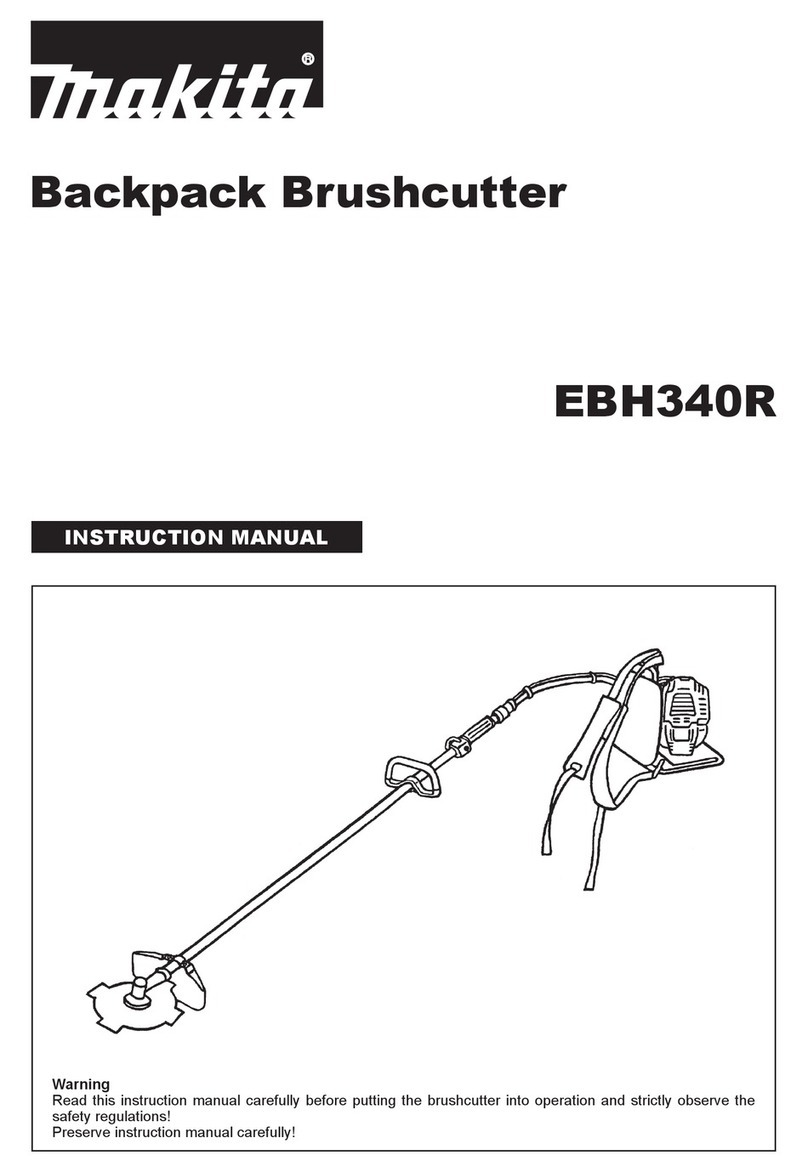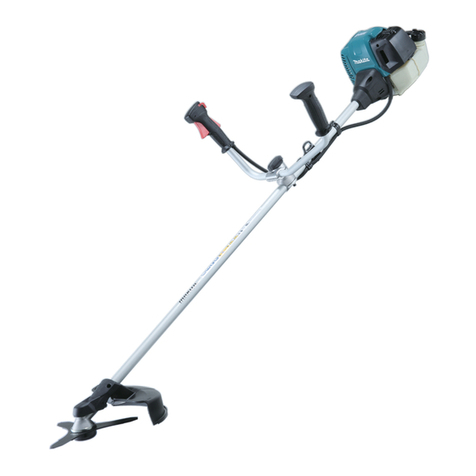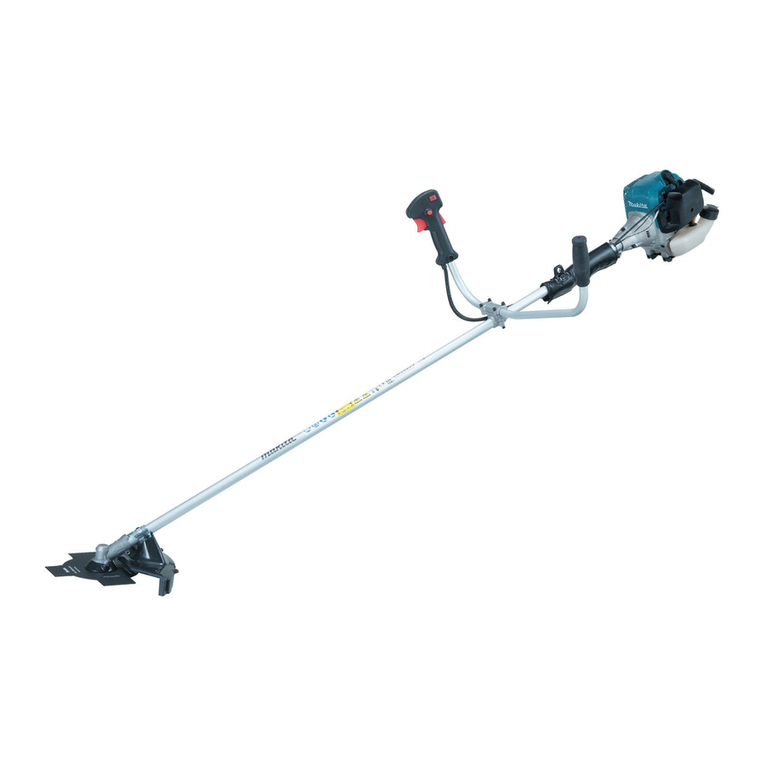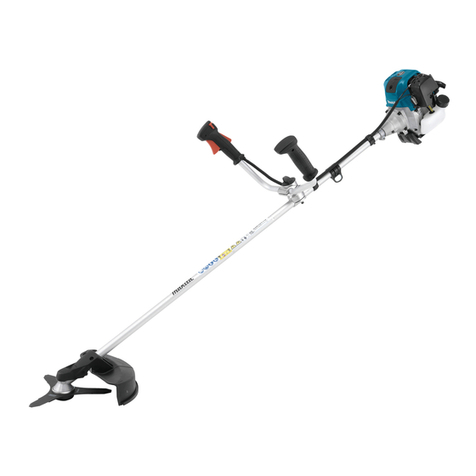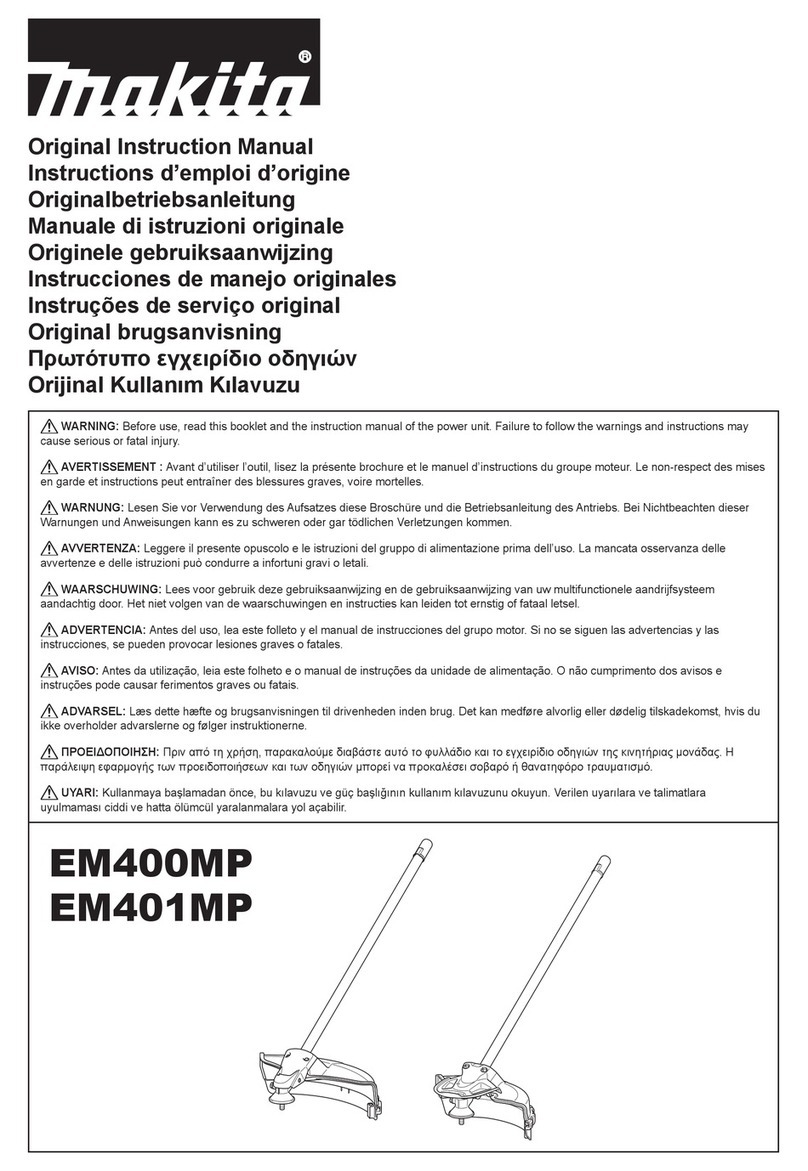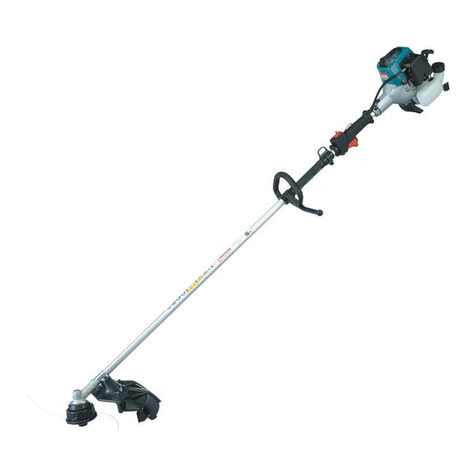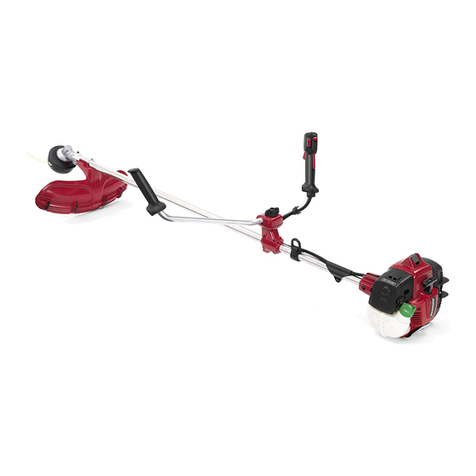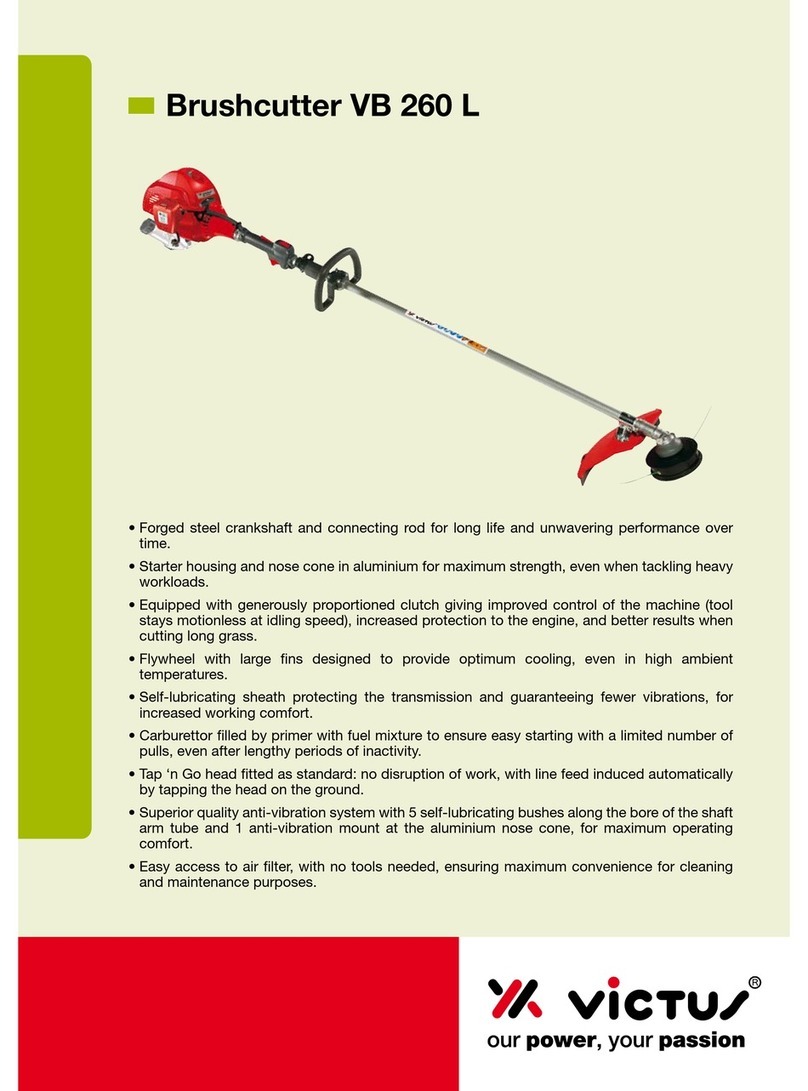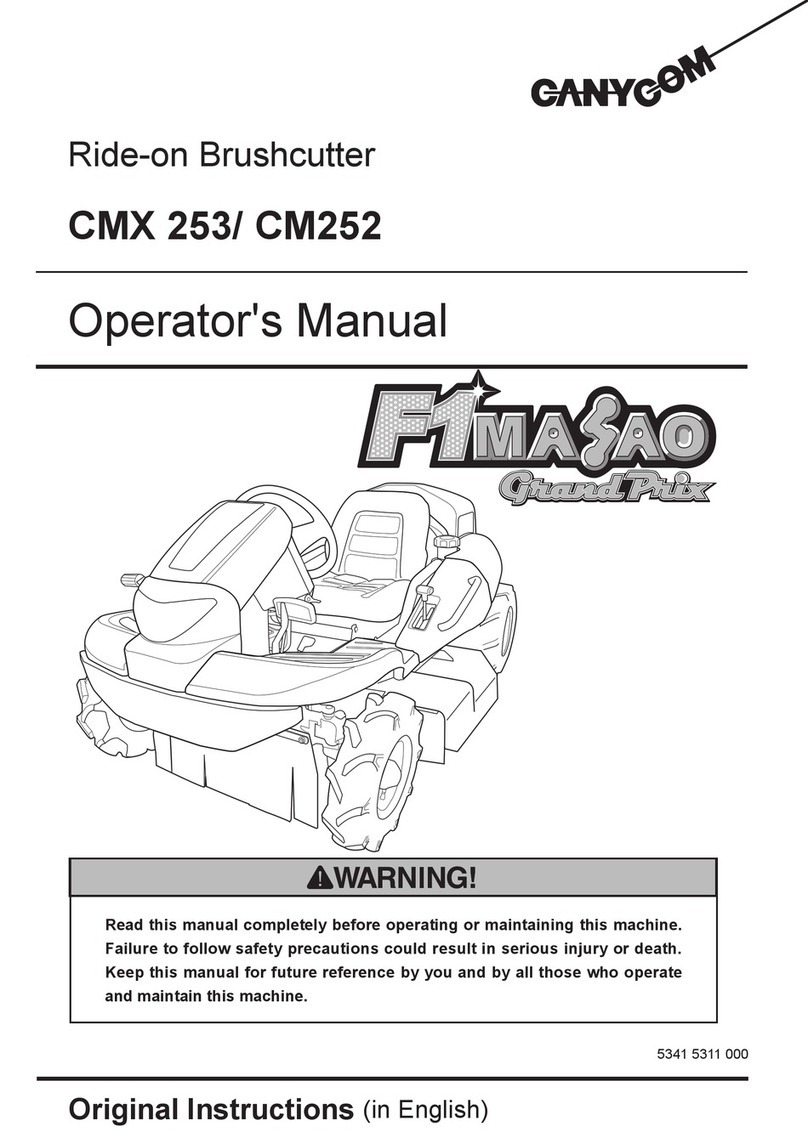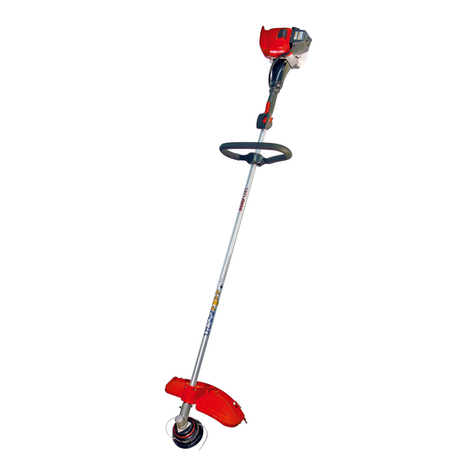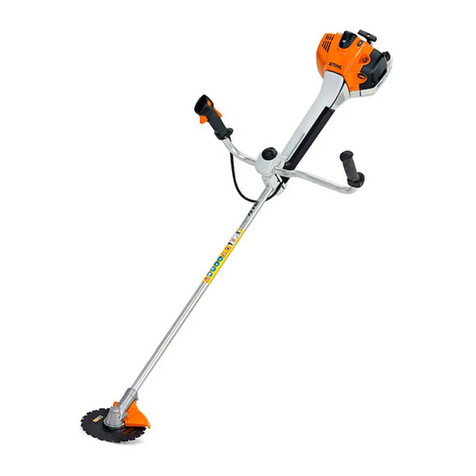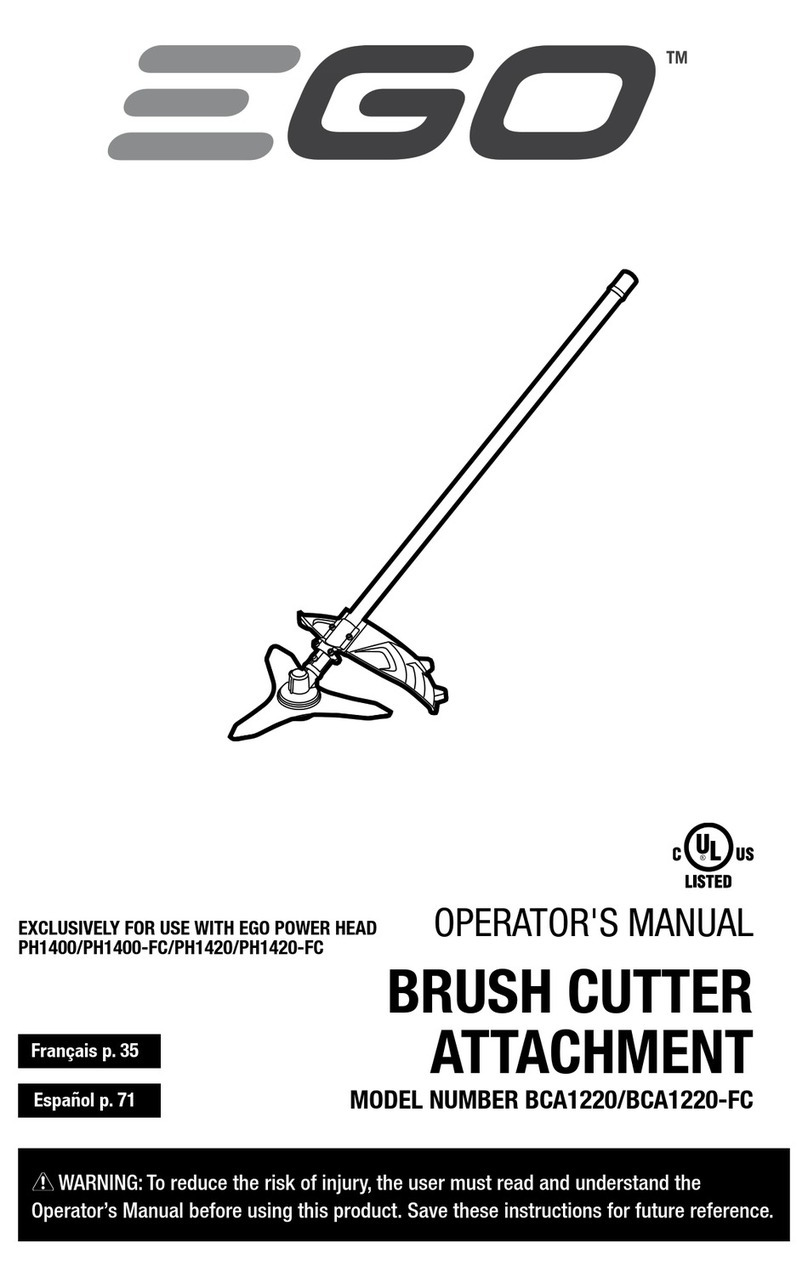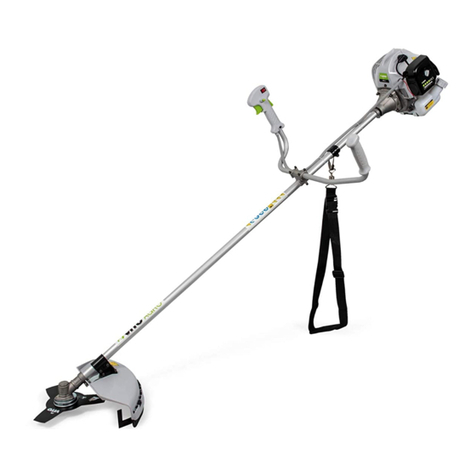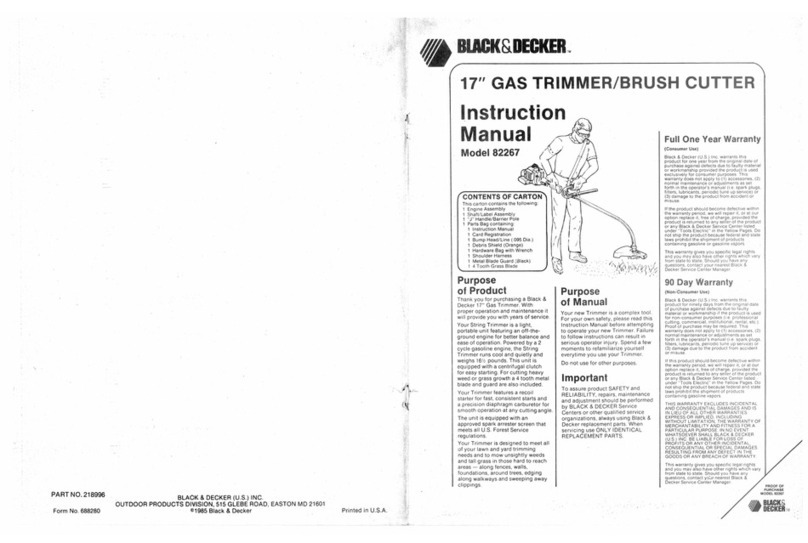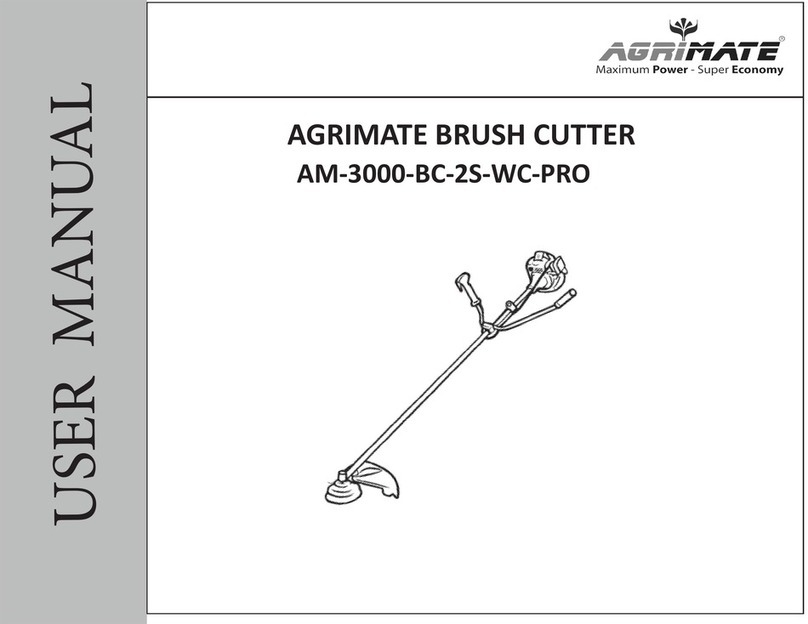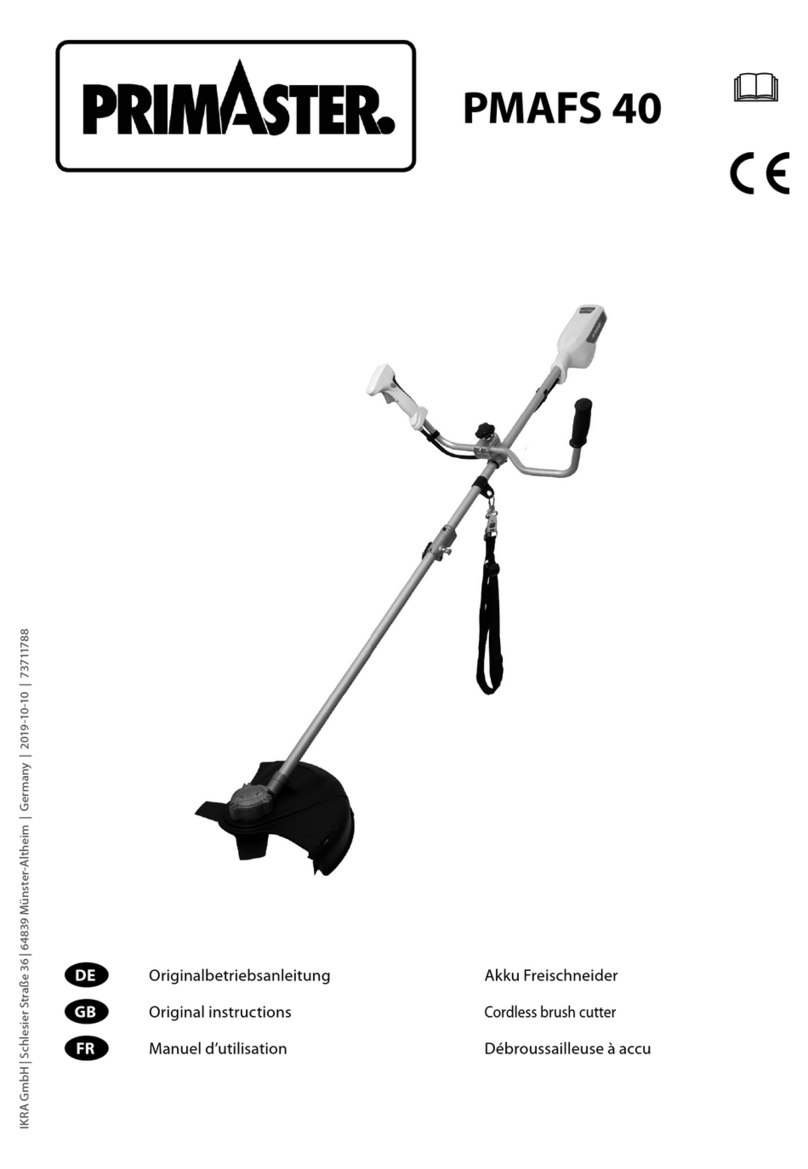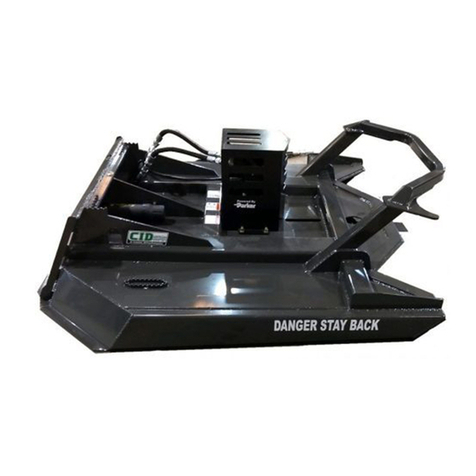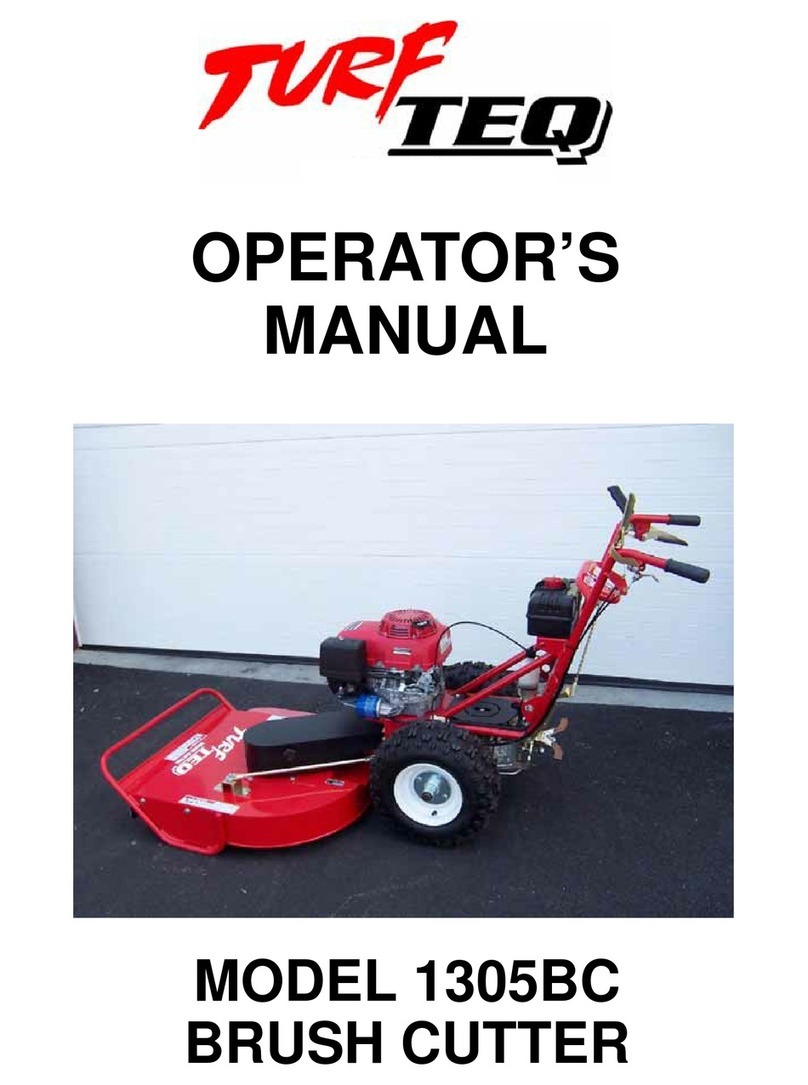Resting•
Transport•
Refuelling•
Maintenance•
Tool Replacement•
3 meters (10 ft)
4
Start the brushcutter only in accordance with the instructions.
Do not use any other methods for starting the engine!–
Use the brushcutter and the tools only for such applications as specified.–
Only start the engine, after the entire assembly is done. Operation of the device is–
only permitted after all the appropriate accessories are attached!
Before starting make sure that the cutting tool has no contact with hard objects–
such as branches, stones etc. as the cutting tool will revolve when starting.
The engine is to be switched off immediately in case of any engine problems.–
Should the cutting tool hit stones or other hard objects, immediately switch off the–
engine and inspect the cutting tool.
Inspect the cutting tool at short regular intervals for damage (detection of hairline–
cracks by means of tapping-noise test).
If the equipment gets heavy impact or fall, check the condition before continuing–
work. Check the fuel system for fuel leakage and the controls and safety devices
for malfunction. If there is any damage or doubt, ask our authorized service center
for the inspection and repair.
Operate the equipment only with the shoulder harness attached which is to be–
suitably adjusted before putting the brushcutter into operation. It is essential
to adjust the shoulder harness according to the user size to prevent fatigue
occurring during use. Never hold the cutter with one hand during use.
During operation always hold the brushcutter with both hands.–
Always ensure a safe footing.
Operate the equipment in such a manner as to avoid inhalation of the exhaust–
gases. Never run the engine in enclosed rooms (risk of gas poisoning). Carbon
monoxide is an odorless gas.
Switch off the engine when resting and when leaving the equipment unattended,–
and place it in a safe location to prevent danger to others or damage to the
machine.
Never put the hot brushcutter onto dry grass or onto any combustible materials.–
Always install the approved cutting tool guard onto the equipment before starting–
the engine.
Otherwise contact with the cutting tool may cause serious injury.
All protective installations and guards supplied with the machine must be used–
during operation.
Never operate the engine with faulty exhaust muffler.–
Shut off the engine during transport.–
When transporting the equipment, always attach the cover to the metal blade.–
Ensure safe position of the equipment during car transportation to avoid fuel–
leakage.
When transporting, ensure that the fuel tank is completely empty.–
When unloading the equipment from the truck, never drop the Engine to the–
ground or this may severely damage the fuel tank.
Except in case of emergency, never drop or cast the equipment to the ground or–
this may severely damage the equipment.
Remember to lift the entire equipment from the ground when moving the–
equipment. Dragging the fuel tank is highly dangerous and will cause damage
and leakage of fuel, possibly causing fire.
Refuelling
Shut off the engine during refuelling, keep away from open flames and do not–
smoke.
Avoid skin contact with mineral oil products. Do not inhale fuel vapor. Always–
wear protective gloves during refuelling. Change and clean protective clothing at
regular intervals.
Take care not to spill either fuel or oil in order to prevent soil contamination–
(environmental protection). Clean the brushcutter immediately after fuel has been
spilt.
Avoid any fuel contact with your clothing. Change your clothing instantly if fuel–
has been spilt on it (to prevent clothing catching fire).
Inspect the fuel cap at regular intervals making sure that it can be securely–
fastened and does not leak.
Carefully tighten the fuel tank cap. Change location to start the engine (at least 3–
meters away from the place of refuelling).
Never refuel in closed rooms. Fuel vapors accumulate at ground lever (risk of–
explosions).
Only transport and store fuel in approved containers. Make sure the fuel stored is–
not accessible to children.

